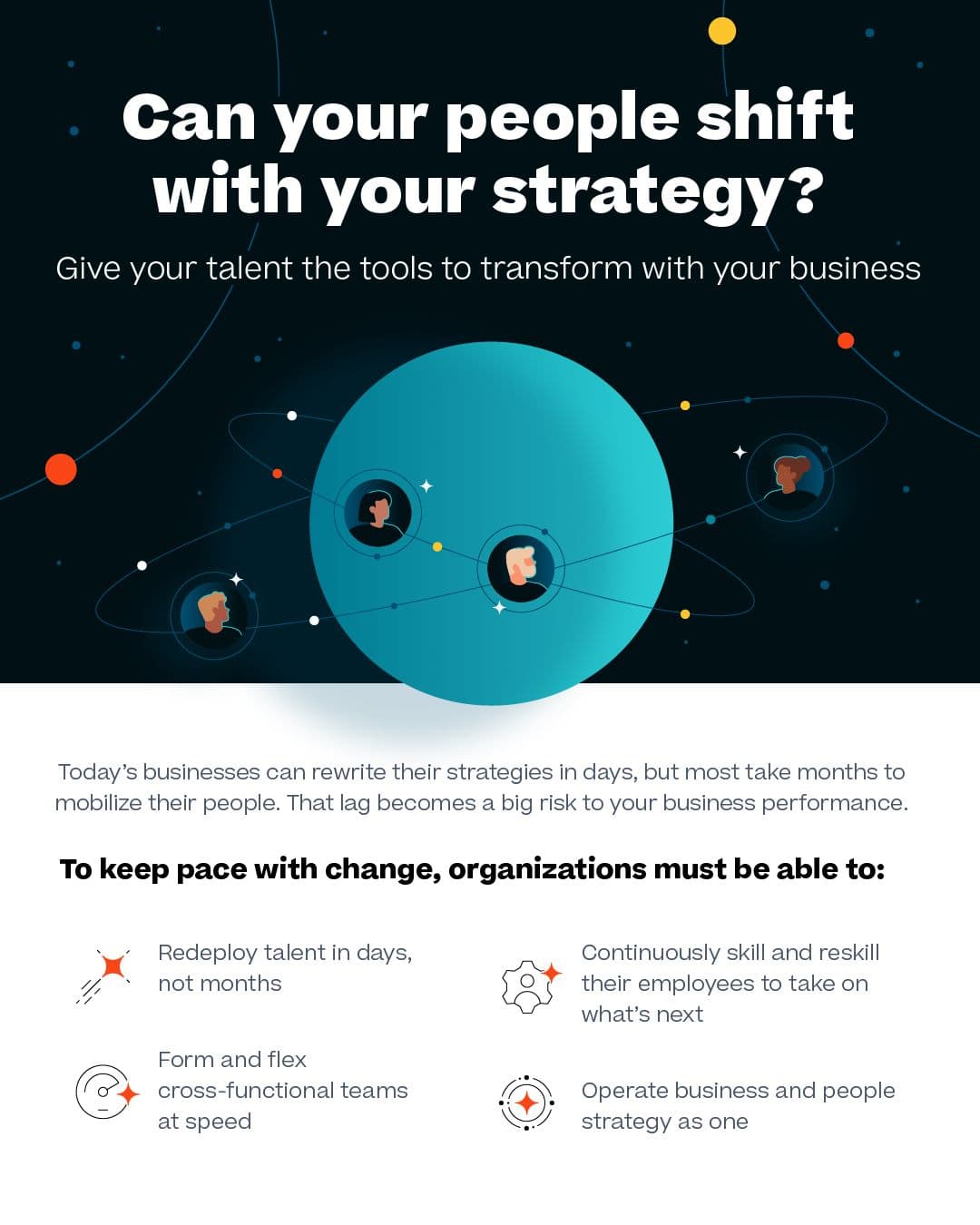Key Takeaways
- Unified HCM platforms boost productivity, cut costs, and deliver measurable ROI.
- Skills-based models make HR more agile, adaptable, and employee-focused.
- AI-powered, integrated HCM systems drive smarter decisions and seamless employee experiences.
Between digital acceleration, tighter budgets, and changing employee expectations, HR leaders have a lot on their plate. Human Capital Management (HCM) is no longer just a support function, it’s a strategic driver of agility, productivity, and long-term value.
Looking ahead to 2025, four key trends are emerging across forward-thinking organizations: unified HCM platforms, skills-first models, AI integration, and the convergence of learning, talent, and core HR. Let’s take a closer look at how these shifts are shaping the future of HR, and why it’s time to take action.
1. Unified HCM Platforms Deliver Real, Measurable Results
Companies that move to a unified HCM platform are seeing concrete results:
- Up to 12.5% increase in productivity
- Up to 40% reduction in HR IT support costs
- Stronger engagement and retention rates
(Sources: Valoir, Gallup, Disprz, 2025)
But it doesn’t stop there. Forrester’s 2025 Total Economic Impact study shows that unified HCM can generate up to 330% ROI over three years with faster payback and real productivity gains.
Why does it work? Because integrated systems break down silos, streamline data and processes, and support a smoother, more consistent employee experience, from day one to development and beyond.
2. Skills-Based Models Make HR More Agile
Fosway’s latest research confirms it: moving to a skills-first approach is helping organizations become more agile and responsive.
Instead of focusing on static job roles or org charts, HR teams can:
- Match people to projects based on current or emerging skills
- Break down silos between HR, L&D, and workforce planning
- Build teams that adapt quickly as business needs evolve
A skills-based model also makes it easier to support internal mobility, upskilling, and long-term retention all while giving employees more visibility over their own growth.
3. AI Is No Longer a Buzzword, it’s a Business Driver
In 2025, AI isn’t about hype, it’s about value. The most effective HCM platforms are those that embed AI across learning, talent, and workforce analytics to deliver:
- Smarter, data-driven decisions
- Clear ROI
- Simpler, more connected systems
With AI, HR teams can:
- Spot early signs of disengagement
- Recommend personalized learning based on skill gaps
- Plan future workforce needs with more precision
In a cost-sensitive environment, proving impact is no longer optional. AI brings the insights HR leaders need to back their strategies with confidence.
4. When Core HR, Learning & Talent Come Together, Everyone Wins
Fosway highlights a growing trend: the integration of core HR, learning, and talent into a single, unified platform is becoming a real differentiator, especially for mid-sized and large European organizations.
Why does convergence matter?
- It creates a seamless employee experience
- It simplifies operations and reduces tech sprawl
- It gives HR one reliable source of workforce data
The result? A connected ecosystem that supports learning, mobility, and engagement at scale, instead of disconnected tools and fragmented insights.
What It Means for HR Leaders in 2025
The message is clear: HR needs to be connected, data-driven, and fully aligned with business goals.
“Fosway’s latest research confirms it: a skills-based, integrated approach to HCM is unlocking agility, cost-efficiency, and real ROI, especially when supported by AI and analytics.”
So what are leading HR teams doing today?
- Reviewing their tech stack to spot overlaps or inefficiencies
- Adopting skills-first models to future-proof their talent strategy
- Investing in unified HCM technology that bring learning, talent, and AI into one seamless experience
In an environment that’s increasingly complex, the future of HCM belongs to those who can simplify, consolidate, and personalize. Unified, skills-based workforce planning platforms, powered by AI, are no longer a nice-to-have. They’re essential.
Whether your priority is agility, cost-efficiency, or workforce empowerment, the direction is clear: now is the time to evolve.
Want to see what this looks like in practice?
👉Take the Navaactic HCM Tour for a detailed walkthrough of the platform’s AI-driven features — and how they fit into real HR ecosystems.
👉 Or read the Strategic Guide to Modernizing HCM and Reducing Cost for practical insights on aligning your tech investments with your business goals.


